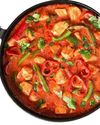
On September 20, 1519, a fleet of five ships and 270 men commanded by Ferdinand Magellan set sail from Sanlúcar de Barrameda in Spain to find Indonesia's fabled "spice islands". A little over a year later, Magellan arrived at the strait separating mainland South America to the north and the archipelago of Tierra del Fuego to the south. It was this sea route - later known as the Strait of Magellan that would take him to the Pacific Ocean.
After 38 days navigating the treacherous strait, Magellan finally sighted ocean. It would take only a further 99 days to accomplish the westward crossing of the ocean waters so curiously calm that it was named "Pacific", from the Latin pacificus, meaning "tranquil". The Portuguese navigator had become the first European explorer to reach the Pacific from the Atlantic, but little did he realise that his life would soon end in the sprawling archipelago that would later be named after King Philip II of Spain.
When Magellan reached the Philippines on March 17, 1521, he quickly saw an opportunity to place the hospitable indigenous people under the authority of the Spanish king - and convert them to Catholicism. Cebu became the base of Magellan's exploration and conquests, with the local ruler, Rajah Humabon, giving him a warm reception and embracing Christianity. A month after Magellan's arrival, Humabon was christened Carlos Valderrama in honour of King Charles I of Spain, while his chief consort, Hara Humamay, was given the name Juana, after Charles' mother, Joanna of Castile. After her baptism, Queen Juana was presented with an image of the Child Jesus - Santo Niño - as a gesture of goodwill for accepting her new faith.
This story is from the {{IssueName}} edition of {{MagazineName}}.
Start your 7-day Magzter GOLD free trial to access thousands of curated premium stories, and 9,000+ magazines and newspapers.
Already a subscriber ? Sign In
This story is from the {{IssueName}} edition of {{MagazineName}}.
Start your 7-day Magzter GOLD free trial to access thousands of curated premium stories, and 9,000+ magazines and newspapers.
Already a subscriber? Sign In

Revealed Silver
Known in Latin as argentum, originating from the Sanskrit word argunas meaning \"shining\", silver is often an overlooked metal in comparison to gold, though it has properties that make it a unique and special element.

Celebrating the 2023 Rolex Awards for Enterprise Laureate: Liu Shaochuang
As a part of the Perpetual Planet Initiative, the Rolex Awards for Enterprise continues to expand the initiative’s growing portfolio, supporting exceptional individuals with innovative projects in areas such as the environment, science and health, applied technology, cultural heritage, and exploration.

The Treasures of Tahiti and the Journey of Giants
For decades, French Polynesia's beguiling islands have adorned travel brochures, alluring honeymooners with turquoise lagoons, overwater bungalows, and lush volcanic peaks. Some 7,000 kilometres from its closest neighbours, and spread over five main island groups, the French territory's real treasures are not just what you see in the splashy brochures. Get ready for untamed, wild, ocean encounters.

Asian Blades
Historically, swords served as crucial tools for warfare and symbols of social status, shaping military strategies and cultural identities across the region. Fascinating objects found in museums, these ancient items of silverware are just as likely to be found in private collections around the world

Bear Witness REVISITED
Through soulful eyes we see ourselves These creatures sad and splendid For though they be confined to bars Flesh bodies crushed, tormented Their spirits burn with freedom's fight Mad, somewhat demented... Like the rusting strands of metal twine That hold their fate suspended Cruelty is an irony A stage for man To play his hand In wickedness or wonder

A Spectrum Of Scarlet: The Symbolic Red Of Asian Flags
A common thread that unites many Asian flags is the prominent use of red, a colour rich with symbolism

Curry: A World of Flavour, Tradition, and Culture
From its humble beginnings in India, the concept of "curry" has evolved into a culinary language understood around the world

The Power Of Asian Red Fruits - Discover 10 Nutrient-Rich Gems Of The East
In the vast tapestry of Nature, Asia has gifted the world an array of unique and vibrant fruits, particularly those in shades of red. These scarlet-hued gems, packed with flavour and nutrients, not only add a burst of colour to your plate but also carry valuable health benefits. From antioxidant-rich goji berries to the exotic dragon fruit, let's explore some of the most popular red fruits from Asia and discover why they should be part of your diet.

Bhutan: A World Of Its Own
With its majestic monasteries, red-robed monks, charming rural villages, and vibrant festivals, the Kingdom of Bhutan is a Himalayan paradise that promises an enriching travel experience like no other

Take The Red Pill
From the vermilion torii gates of Japan to the famed rust-hued walls of India's Agra Fort, the burgundy robes of Burmese monks to scarlet chillies drying in the Bangladeshi sun, red is the quintessential colour of Asia.